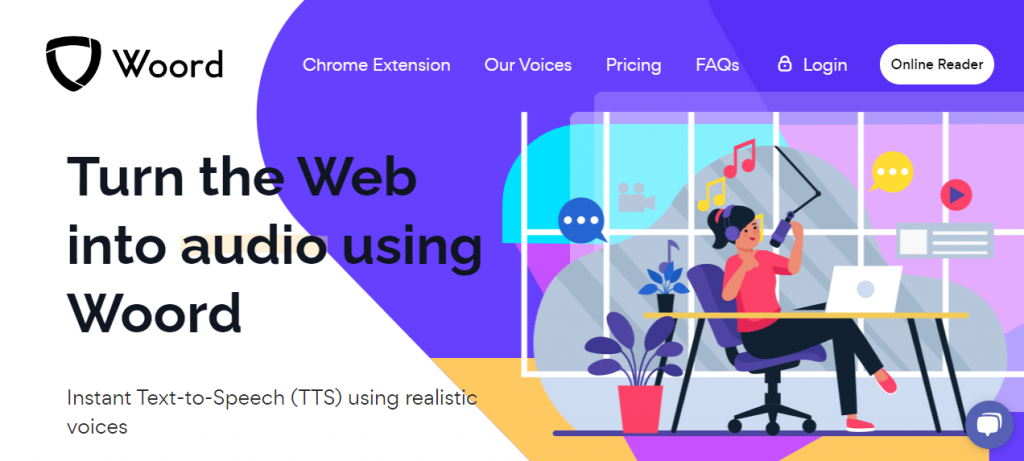Text-to-speech (TTS) APIs have been rapidly gaining popularity in recent years as they allow for the creation of more engaging and accessible content for a wider range of users.
How? TTS APIs enable machines to convert written text into spoken words, which can be played back in a human-like voice.
This technology can be used to create audio versions of written content, such as articles, blogs, e-books, or even web pages, making it easier for people with visual impairments, learning difficulties, or reading disabilities to access the information.
Also, TTS technology has come a long way in recent years, and the voices generated by the latest APIs like Woord are highly realistic and natural-sounding.
As a result, TTS technology has the potential to significantly enhance the user experience and increase engagement with the content. In this way, TTS APIs can make content more inclusive, interactive, and enjoyable for a broader audience.
How Can Text To Speech Help You Make Content More Engaging?
Text to speech enables brands, companies, and organizations to deliver enhanced end-user experience, while minimizing costs. Whether you’re developing services for website visitors, mobile app users, online learners, subscribers or consumers, text to speech allows you to respond to the different needs and desires of each user in terms of how they interact with your services, applications, devices, and content.
Why Do We Recommend Woord?
Woord is a service that allows developers to convert text into speech.
This enables you to listen to any text you want and create applications that can read aloud any text; such as news articles, product descriptions, or even animated series scripts. The text can be in any format as long as it’s understandable by computers. It can be plain text, XML, JSON, or even programming code.
The API then processes the text and returns a response in a format that can be used by your application. This response may be in the form of an audio file that you can play back; or a string of commands that you can use to control a voice synthesizer.

Why Is Woord The Key To More Engaging Content?
With Woord, you can bring your applications to life, by adding life-like speech capabilities. For example, in E-learning and education, you can build applications leveraging Woord’s Text-to-Speech (TTS) capability to help people with reading disabilities.
Also, you can use it in announcement systems in public transportation and industrial control systems for notifications and emergency announcements. There are a wide range of devices such as set-top boxes, smart watches, tablets, smartphones and IoT devices, which can leverage Woord for providing audio output.
Another application of this API is in telephony solutions to voice Interactive Voice Response systems. Applications such as quiz games, animations, avatars or narration generation are common use-cases for cloud-based TTS solutions like Woord.
How To Use This API
To convert text into audio with Woord, all you have to do is:
1. Open the API and paste in the text or URL you want to convert to audio.
2. Select the language you want the audio to be in and the speed at which you want it to be read.
3. Once you’ve done that, Woord will create an audio file that you can listen to.


